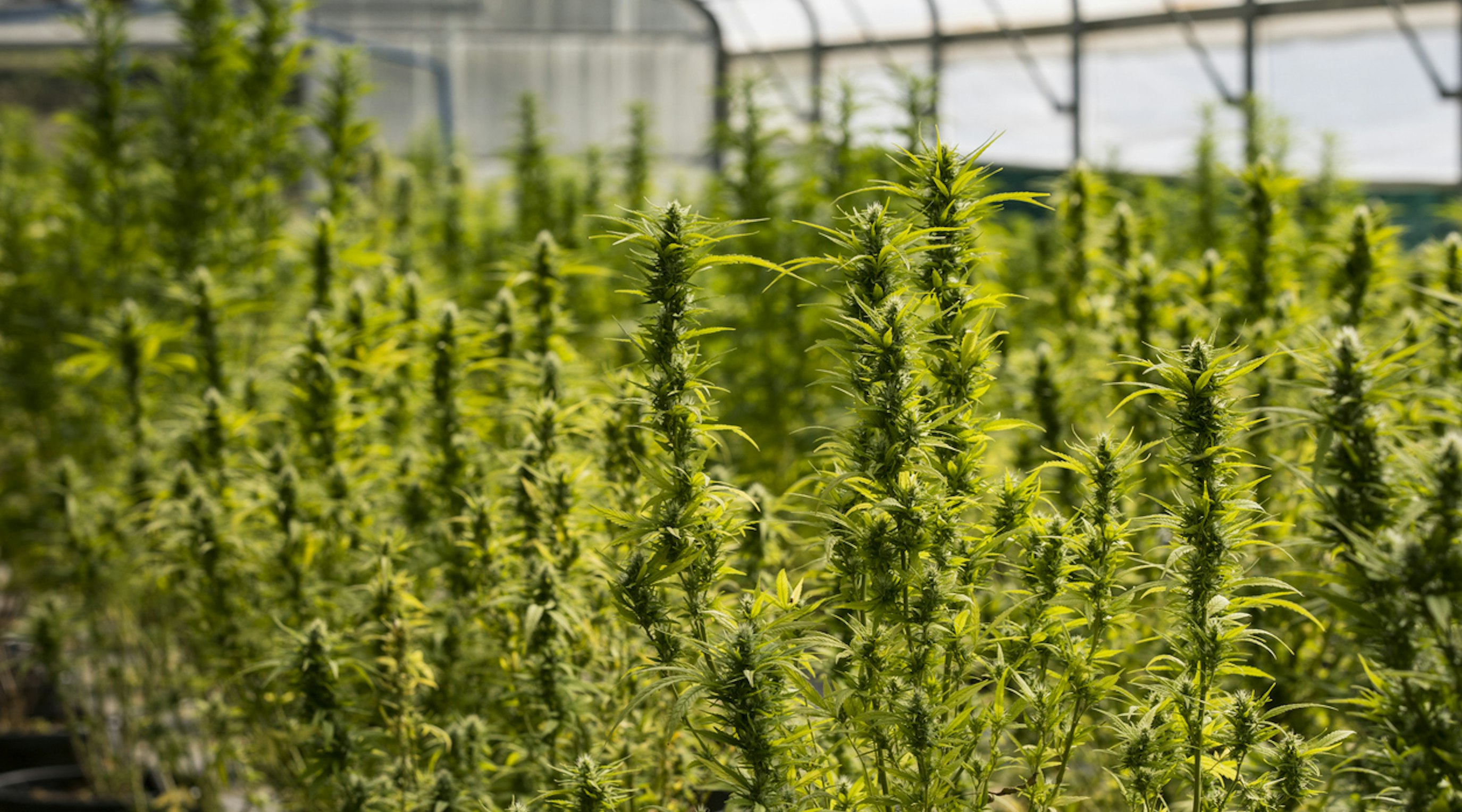Could cannabis help tackle climate change?
Decades of prohibition-focused drug policy and a ‘war on drugs’ mentality, have meant that the cannabis plant’s potential for providing solutions to many of the environmental and social challenges facing the modern world have largely gone under the radar.
The environmental benefits of growing cannabis are well documented. As a crop it can sequester (or absorb) more than twice the amount of carbon than trees. A study from the University of York showed that one hectare of hemp can absorb up to 22 tonnes of carbon dioxide (CO2), which is three times more than a hectare of wheat.
It also has benefits for soil health as it naturally absorbs heavy metals and other pollutants from the ground and doesn’t require as much chemical intervention or harsh fertilisers as other commercial crops.
Its ability to rejuvenate the soil makes it an excellent tool for improving crop yields, introducing more sustainable farming practices, and boosting biodiversity by encouraging wildlife such as birds and bees to the area. Certain species such as Tree sparrows and Starlings are even known to enjoy snacking on hemp seeds.
Then of course, once grown, hemp can be used in the production of many everyday items — from plastic, paper and fabric, to batteries and building materials — that are far more sustainable than their traditional counterparts.
Climate considerations for the medical cannabis industry
But despite its natural environmental benefits, the medical cannabis industry faces a number of challenges when it comes to sustainability.
Energy
Cannabis cultivation can be an energy-intensive process, with many environmental considerations from the cultivation and processing itself to the transportation and import/export of products, and disposal of waste.
Most medical cannabis is grown indoors in a controlled environment, especially in the UK due to the climate. As a result, it requires large amounts of energy for lighting, heating, ventilation, and air conditioning (HVAC) systems to create the right cannabis germination environment.
According to research by the European Monitoring Centre for Drugs and Drug Addiction, indoor cannabis cultivation requires about 6,000kWh of energy per 1kg, with a carbon footprint of 1,400kg.
Transport
Beyond energy consumption, there is also transportation, processing, and packaging to factor into a producer’s carbon footprint.
As the domestic medical cannabis industry is still in its infancy in the UK, at the moment the majority of prescribed products are grown and manufactured overseas and imported from countries across the globe, sometimes travelling thousands of miles before it ends up in the hands of the patient.
Water
Cannabis plants require a significant amount of water, especially during the growth phase. According to some sources, each plant requires between five and six gallons of water per day, which is nearly twice that of other commodity crops.
The overuse of pesticides and other chemicals during the growing process can contaminate the natural environment, while volatile organic compounds (VOCs) and odours released into the atmosphere could potentially impact air quality in the surrounding areas.
Wildlife habitats
Just as cannabis can be beneficial for biodiversity, the development of large-scale cultivation facilities can actually have a detrimental effect, disrupting wildlife habitats and natural vegetation with land take.
Waste
Then there is the issue of waste disposal. Cannabis cultivation generates various types of waste, including plant material, packaging, and wastewater. Analysts at New Frontier Data have previously predicted that by 2025, the legal cannabis industry’s total water use will increase by 86% compared to 2020.
Thought to be the most cost-effective solution, plastic dominates product packaging in the global medical cannabis industry, from plastic tubs of flower to single-use vape cartridges, contributing to the growing issue of plastic pollution.
Eco-friendly cannabis cultivation practices
Despite the climate challenges that can come with medical cannabis cultivation, there are more sustainable practices that companies can adopt and ways to help offset their carbon footprint.
And one of the benefits of being a new industry, is that those operating within it have the opportunity to utilise new research and technological advancements to help them reduce their environmental impact.
Renewable energy
Investing in renewable energy sources such as solar or wind power can help offset the carbon emissions associated with energy consumption.
The manufacturer we work with, Glass Pharms, has recently completed work on its eco-friendly cannabis greenhouse, and is the UK’s first ‘carbon neutral’ facility. It uses energy from a closed loop system with an adjoining anaerobic digestion plant run on supermarket and household food waste that also provides heat and carbon dioxide.
In addition, all of the water during the cultivation process is collected from rainwater, which is treated and reused.
Energy-efficient lighting
Transitioning to energy-efficient lighting systems such as LEDs can also help to reduce electricity consumption compared to traditional high-pressure sodium (HPS) lights.
LED lighting not only consumes less energy but also produces less heat, reducing the need for additional HVAC systems.
A study from 2022, which is thought to be the first to examine energy efficiency in the cannabis industry, found that facilities using LED lights can reduce energy use by 50%. Furthermore, using the best LED lights can reduce cooling needs by 10% compared to average LEDs and by more than 30% compared to HPS lights.
‘Optimal minimum conditions’
Although very little research has been done to date due to the early stages of the industry, the same study also suggested that energy use intensity could be up to three times higher than the “optimal minimum conditions” needed for cannabis production.
Using their methodology for these ‘optimum minimum conditions’—which take into account the changing needs of the plant throughout its growth cycle—HVAC systems can reduce fan energy by up to 50% during the light cycle and 90% during the dark cycle, especially if a displacement ventilation approach to humidity control is adopted.
Free outdoor air cooling, which is widely used in the building industry, could reduce mechanical cooling needs by an additional 40% depending on the location.
Water conservation
In order to better control the amount of water that is used, some facilities are moving away from hand watering to a process known as drip irrigation.
These work by delivering the precise amount of water directly to the root of the plant to avoid wastage. In some cases these systems also have sensors which can monitor moisture conditions in real time.
Waste disposal
In regulated industries waste must be disposed of in the correct manner in line with licensing requirements. However, these may vary between different jurisdictions.
Implementing comprehensive waste management practices at cultivation facilities including recycling programmes for plastic, paper, and other materials, can help minimise the amount of waste sent to landfills.
Where possible, producers can also compost plant waste which can then be recycled to help regenerate the soil in which the plants are grown.
Packaging
While plastic packaging for medications might be a cost-effective solution for producers, not only does it almost always end up in landfill, but it’s not the best material for storing cannabis flower when it comes to maintaining its optimum quality.
Producers should look towards more eco-friendly cannabis packaging such as biodegradable plastics, recyclable or compostable packaging materials. And using minimal and lightweight packaging designs to help to further reduce the environmental impact.
Local production
One of the key ways in which the UK medical cannabis industry can reduce its carbon footprint is through the establishment of a domestic supply chain.
Minimising the distance that products have to travel to reach patients inevitably reduces the amount of carbon emissions transmitted into the atmosphere during the transportation process.
While it will take time to establish a robust supply chain and may never reach a point where imports and/or exports are removed from the process entirely, taking efforts to source other materials locally where possible, such as soil, nutrients, and packaging material can help lower the overall carbon footprint of cannabis cultivation operations.





